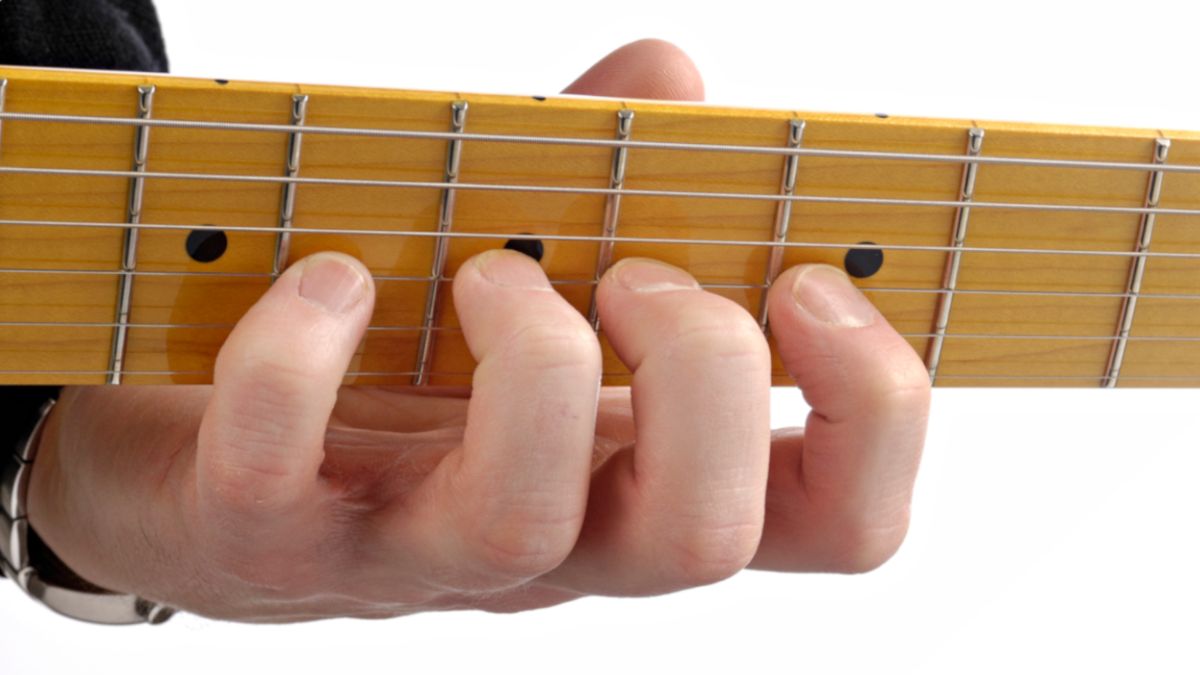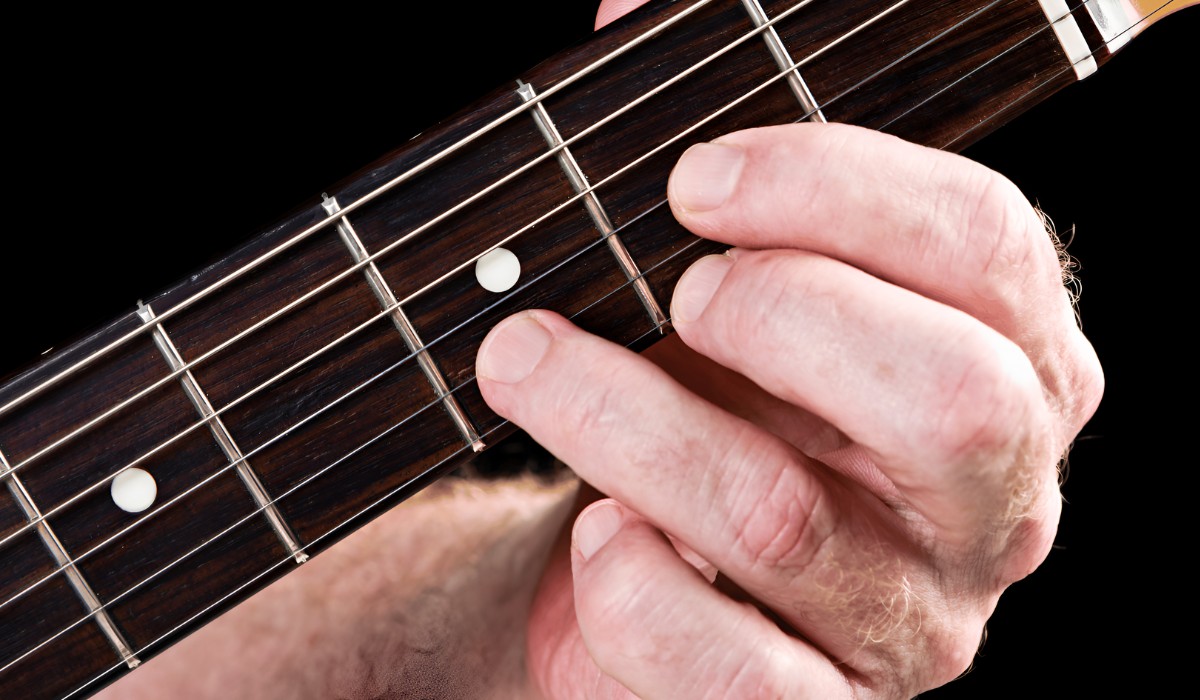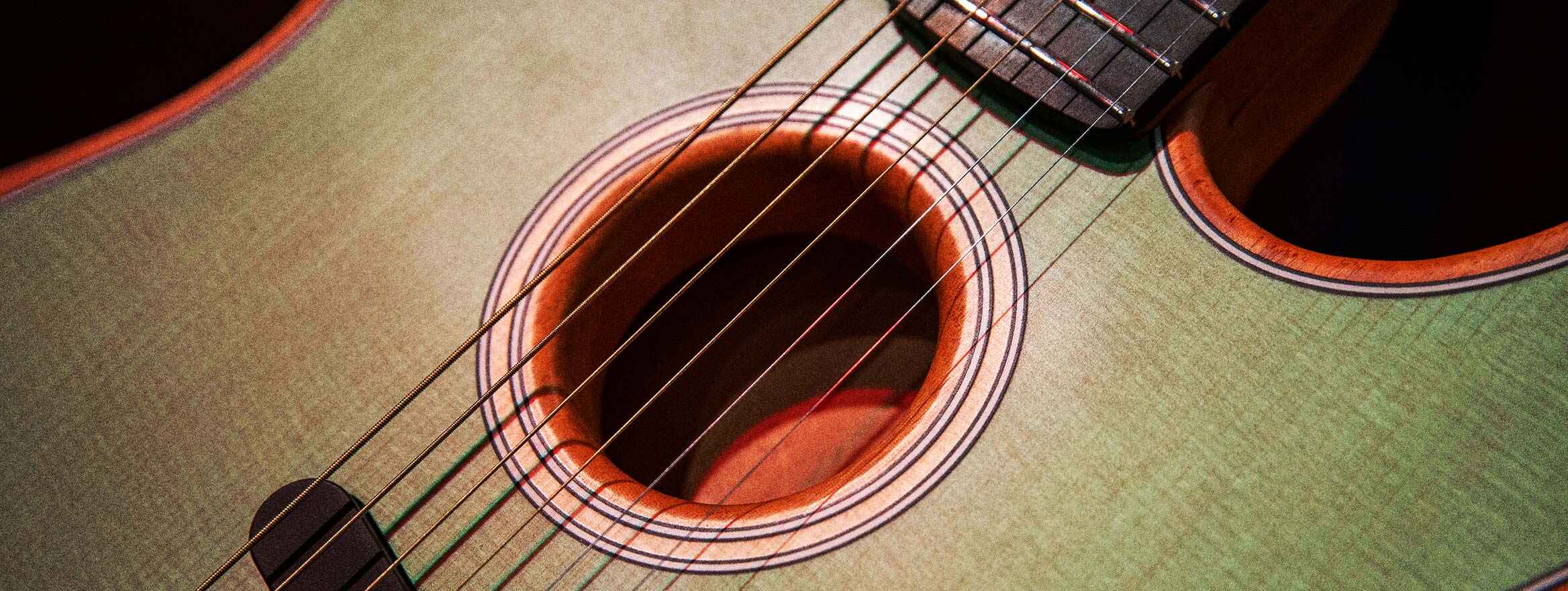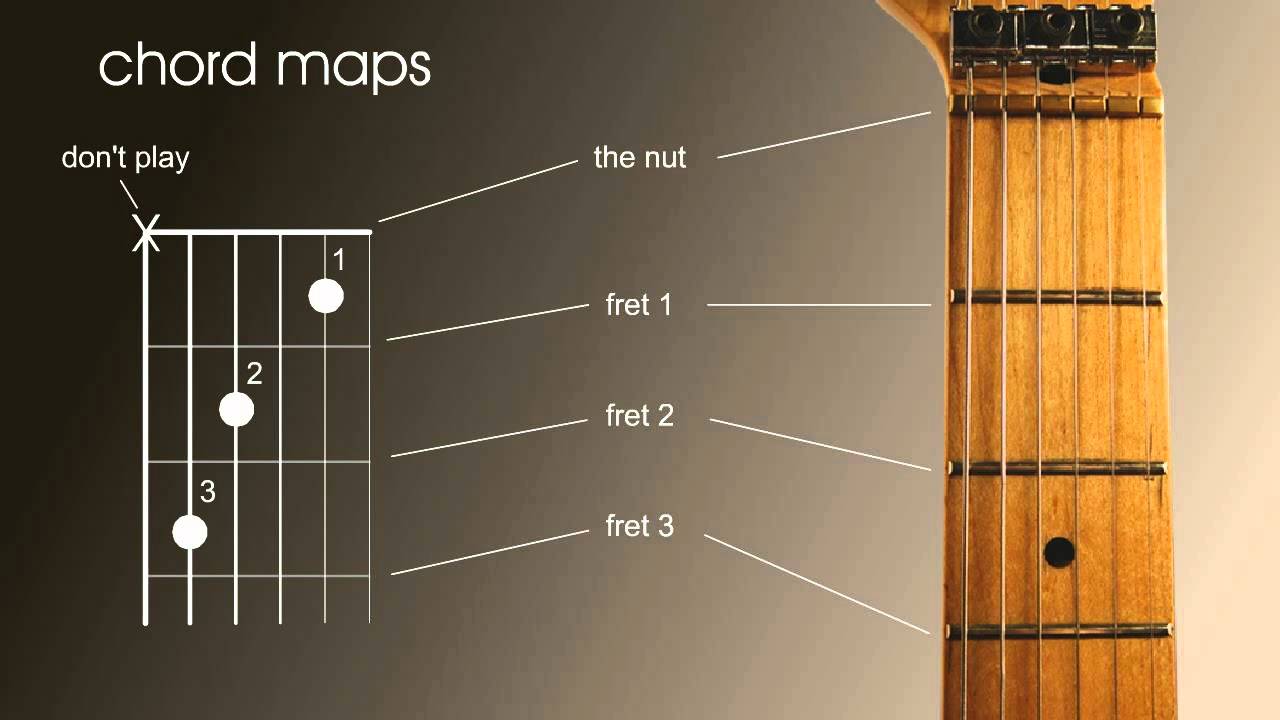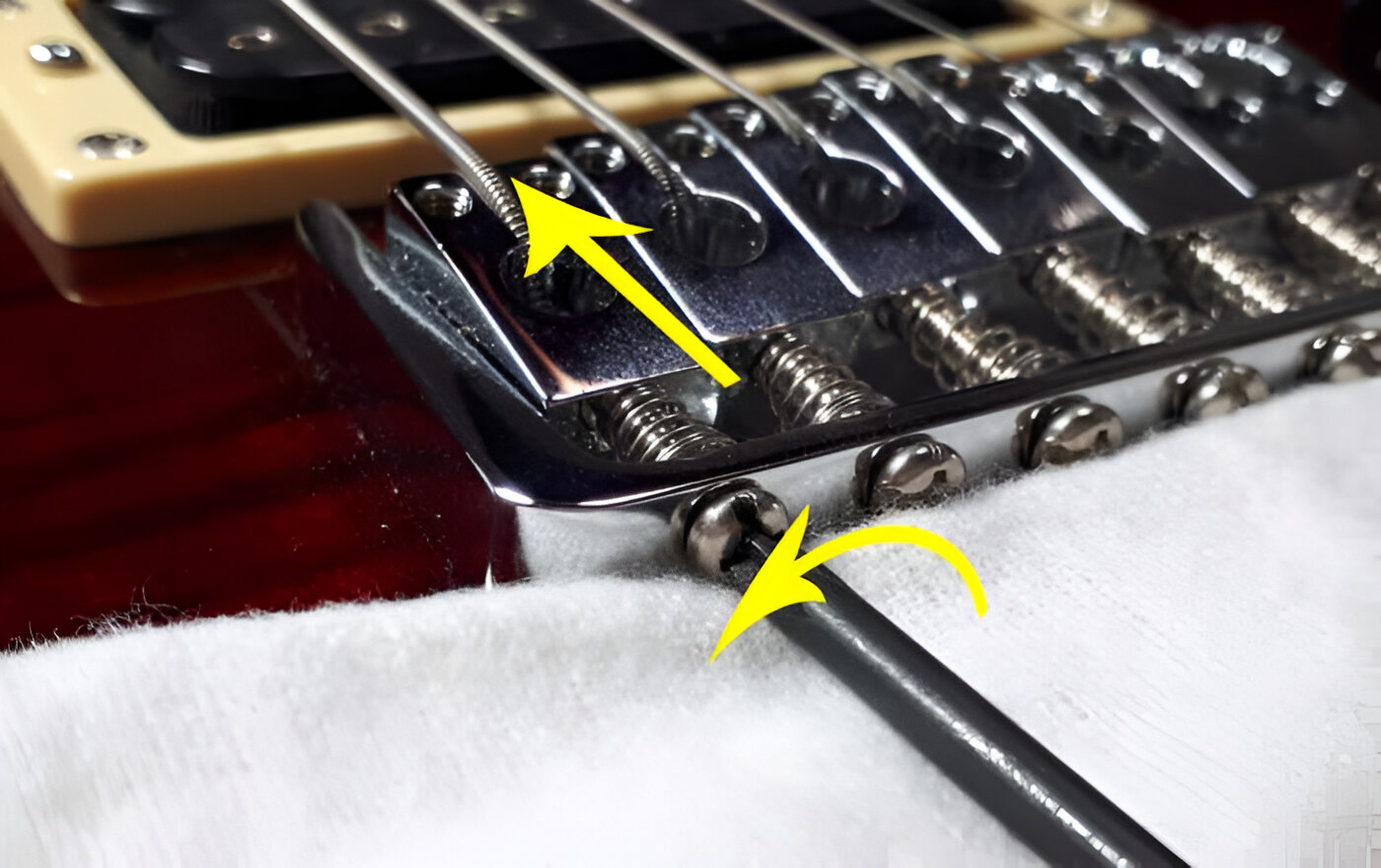Introduction
Tuning an electric guitar half step down is a popular technique among guitarists, offering a unique and distinct sound. This method involves lowering each string of the guitar by a half step, resulting in a different pitch for each note. While standard tuning is the norm for most guitarists, tuning half step down can bring a new dimension to your music.
Whether you're a beginner or an experienced guitarist, understanding how to tune your electric guitar half step down and the significance of this tuning is essential. This article will guide you through the process and provide valuable insights into the benefits and implications of half step down tuning.
Tuning your electric guitar half step down requires precision and attention to detail. By exploring the reasons behind this tuning method and the specific steps involved, you can elevate your musical repertoire and explore new sonic possibilities. Additionally, learning about the notes involved in half step down tuning and essential tips for achieving the perfect tuning will equip you with the knowledge to master this technique effectively.
In the following sections, we will delve into the intricacies of tuning your electric guitar half step down, comparing it to standard tuning, and outlining the specific notes required for this method. By the end of this article, you will have a comprehensive understanding of half step down tuning and the practical skills to implement it in your guitar playing. Let's embark on this musical journey and uncover the nuances of tuning your electric guitar half step down.
Why Tune Your Guitar Half Step Down
Tuning your guitar half step down offers a range of sonic and practical advantages that can enhance your playing experience and musical expression. This tuning method is favored by many guitarists for several compelling reasons:
- Unique Tone: By tuning your guitar half step down, you can achieve a slightly lower pitch for each note, resulting in a warmer and more resonant tone. This altered pitch adds depth and richness to your sound, creating a distinct sonic character that can complement various musical styles.
- Easier Vocal Range: For vocalists who also play the guitar, tuning half step down can make it easier to sing along while playing. Lowering the pitch of the guitar accompaniment can better align with the vocalist’s range, making it more comfortable to perform and harmonize.
- Reduced String Tension: Half step down tuning reduces the tension on the guitar strings, which can be beneficial for guitarists who prefer a lighter touch or experience discomfort from high string tension. This can lead to improved playability and a more relaxed playing experience.
- Enhanced Bending and Vibrato: Lower string tension resulting from half step down tuning can facilitate smoother and more expressive string bending and vibrato techniques. This can add fluidity and nuance to your playing, allowing for more dynamic and emotive performances.
- Expanded Creativity: The unique tonal qualities of half step down tuning can inspire new musical ideas and compositions. Exploring different tunings can spark creativity and encourage experimentation, leading to the development of fresh musical arrangements and innovative playing techniques.
These reasons illustrate the diverse benefits of tuning your guitar half step down, offering a compelling case for incorporating this technique into your musical repertoire. Whether you seek a richer tone, improved playability, or enhanced creative possibilities, half step down tuning can be a valuable asset in your musical journey.
How to Tune Your Electric Guitar Half Step Down
Tuning your electric guitar half step down involves adjusting each string to a lower pitch, providing a unique sonic characteristic and opening up new possibilities for your playing. To achieve this tuning, follow these step-by-step instructions:
- Start with Standard Tuning: Begin with your guitar in standard tuning (EADGBE).
- Tune the Low E String (6th String): Lower the pitch of the low E string by one half step to achieve the note of D#. Use a tuner or reference pitch to ensure accuracy.
- Tune the A String (5th String): Lower the pitch of the A string by one half step to achieve the note of G#. Again, use a tuner or reference pitch to guide the tuning process.
- Tune the D String (4th String): Lower the pitch of the D string by one half step to achieve the note of C#. Utilize a tuner or reference pitch to attain the correct tuning.
- Tune the G String (3rd String): Lower the pitch of the G string by one half step to achieve the note of F#. Use a tuner or reference pitch to ensure precise tuning.
- Tune the B String (2nd String): Lower the pitch of the B string by one half step to achieve the note of A#. Utilize a tuner or reference pitch to guide the tuning process.
- Tune the High E String (1st String): Lower the pitch of the high E string by one half step to achieve the note of D#. Use a tuner or reference pitch to ensure accurate tuning.
- Double-Check Your Tuning: Once all strings are tuned to the appropriate notes, play each string individually and listen for consistent and accurate pitch. Make any necessary adjustments to achieve optimal tuning.
Following these steps will enable you to tune your electric guitar half step down effectively, unlocking a new sonic landscape and musical potential. It’s essential to use a reliable tuner or reference pitch to ensure precision and accuracy throughout the tuning process.
Now that you have the fundamental knowledge of tuning your electric guitar half step down, you are ready to explore the distinctive qualities and creative opportunities that this tuning offers.
Standard Tuning vs. Half Step Down Tuning
Standard tuning and half step down tuning represent two distinct approaches to configuring the pitch of an electric guitar’s strings, each offering unique sonic characteristics and practical considerations. Understanding the differences between these tunings is essential for guitarists seeking to expand their musical horizons and experiment with diverse tonal palettes.
Standard Tuning (EADGBE):
Standard tuning is the conventional configuration for most electric guitars, featuring the following pitches from the lowest string to the highest: E, A, D, G, B, and E. This tuning provides a balanced and familiar foundation for playing a wide range of musical styles and compositions. Many guitarists begin their musical journey in standard tuning, mastering fundamental techniques and building a repertoire of songs within this framework.
Half Step Down Tuning (Eb Ab Db Gb Bb Eb):
Half step down tuning involves lowering the pitch of each string by one half step, resulting in the following pitches from the lowest string to the highest: Eb, Ab, Db, Gb, Bb, and Eb. This alternative tuning imparts a subtly lower and richer tonal quality to the guitar, offering a distinct sonic palette that can enhance various musical genres and playing styles.
Comparing the Two Tunings:
Standard tuning is renowned for its versatility and widespread application across diverse musical genres, making it a foundational tuning for many guitarists. It provides a balanced and familiar starting point for learning and performing, offering accessibility and adaptability for a wide range of musical contexts.
On the other hand, half step down tuning introduces a warmer and more resonant tonal character, creating a distinct sonic identity that can enrich musical compositions and performances. This tuning is favored by artists seeking a deeper, more expressive sound, and it can complement specific vocal ranges and musical moods with its unique tonal qualities.
Both standard tuning and half step down tuning have their respective merits and applications, catering to different musical preferences, playing styles, and creative objectives. By understanding the distinctions between these two tunings, guitarists can expand their sonic repertoire and tailor their instrument’s sound to suit a diverse array of musical expressions.
As you explore the nuances of standard tuning and half step down tuning, you’ll gain a deeper appreciation for the expressive potential and sonic versatility inherent in each approach, empowering you to craft compelling musical experiences with your electric guitar.
What Should the Notes Be When Tuning Half Step Down
When tuning an electric guitar half step down, each string is adjusted to a lower pitch, creating a unique and resonant sonic profile. The specific notes for half step down tuning are as follows, starting from the lowest string to the highest:
- Low E String (6th String): The low E string is tuned down by one half step to achieve the note of D#.
- A String (5th String): The A string is also lowered by one half step to reach the note of G#.
- D String (4th String): Tuning the D string down by one half step results in the note of C#.
- G String (3rd String): Lowering the pitch of the G string by one half step produces the note of F#.
- B String (2nd String): The B string is tuned down by one half step to achieve the note of A#.
- High E String (1st String): Finally, the high E string is also lowered by one half step to reach the note of D#.
These adjusted notes create a harmonically rich and distinctive tonal landscape, offering a warmer and more resonant sonic profile compared to standard tuning. The resulting pitch relationships between the strings contribute to a unique sonic identity that can enhance various musical styles and compositions.
By understanding and implementing these specific notes for half step down tuning, guitarists can unlock a new realm of sonic possibilities and musical expression. Whether exploring melodic passages, crafting evocative chord progressions, or experimenting with dynamic playing techniques, the altered pitch relationships inherent in half step down tuning can inspire creativity and elevate the musical experience.
With a clear understanding of the notes involved in half step down tuning, you are poised to harness the expressive potential and sonic richness of this alternative tuning, opening up new avenues for musical exploration and artistic innovation with your electric guitar.
Tips for Tuning Your Electric Guitar Half Step Down
While tuning your electric guitar half step down can introduce a captivating new sonic dimension to your playing, it requires precision and attention to detail to achieve optimal results. To streamline the tuning process and ensure a smooth transition to half step down tuning, consider the following tips:
- Use a Reliable Tuner: Employing a high-quality tuner is essential for accurately adjusting the pitch of each string. Whether utilizing a clip-on tuner, pedal tuner, or smartphone app, a reliable tuning device will facilitate precise tuning and help you achieve the desired notes for half step down tuning.
- Check Intonation: After tuning your guitar half step down, it’s important to verify the intonation of each string to ensure accurate pitch across the fretboard. Adjusting the intonation using the guitar’s bridge saddles can optimize the instrument’s overall tuning stability and playability.
- Stretch the Strings: Once tuned to half step down, gently stretch and settle the guitar strings to minimize tuning instability. Gradually applying pressure to each string and retuning as needed can help stabilize the tuning and reduce the likelihood of frequent retuning during play.
- Listen for Consistency: As you tune each string to the designated half step down notes, listen carefully for consistent pitch across the fretboard. Ensuring uniform tuning stability and accurate pitch relationships between strings is crucial for achieving a balanced and harmonious sound.
- Explore New Playing Techniques: Embracing half step down tuning can inspire you to explore new playing techniques and musical styles. Experiment with chord voicings, melodic phrasing, and dynamic expression to harness the unique tonal qualities of this alternative tuning and expand your creative horizons.
- Adjust Your Playing Style: Adapting your playing style to accommodate the lower pitch of half step down tuning can enhance your musical versatility. Embrace the nuances of this tuning by adjusting your fingerings, string bends, and vibrato techniques to fully exploit its expressive potential.
By implementing these tips, you can navigate the process of tuning your electric guitar half step down with confidence and precision, unlocking the captivating tonal nuances and musical possibilities inherent in this alternative tuning. Embrace the creative opportunities afforded by half step down tuning and let its distinctive sonic character enrich your musical journey.
Conclusion
Exploring the art of tuning your electric guitar half step down unveils a world of sonic richness and expressive potential, offering a captivating alternative to standard tuning. By delving into the intricacies of this tuning method, you’ve gained valuable insights into the reasons for tuning half step down, the specific steps involved, and the unique tonal qualities it imparts to your instrument.
Half step down tuning presents a compelling array of benefits, including a warmer and more resonant tone, enhanced playability, and expanded creative opportunities. Whether seeking to align your guitar’s pitch with a vocalist’s range, infuse your playing with expressive vibrato and string bending, or explore new musical avenues, half step down tuning serves as a versatile tool for shaping your sonic identity and musical expression.
By understanding the specific notes required for half step down tuning and embracing essential tips for achieving and maintaining this alternative tuning, you’ve equipped yourself with the knowledge and practical skills to navigate the tuning process with confidence and precision. Embracing the nuances of half step down tuning can inspire creativity, encourage musical exploration, and enrich your playing experience with a diverse array of tonal textures and expressive possibilities.
As you embark on your musical journey with the newfound understanding of half step down tuning, remember to approach the process with patience, attentiveness, and a spirit of creative exploration. Whether you’re a seasoned guitarist seeking to expand your sonic palette or a beginner eager to discover new musical horizons, half step down tuning invites you to unlock fresh dimensions of musical expression and embark on a captivating sonic adventure with your electric guitar.
Embrace the art of tuning your electric guitar half step down as a gateway to sonic discovery and creative innovation, and let its distinctive tonal qualities inspire your musical aspirations and artistic endeavors.









